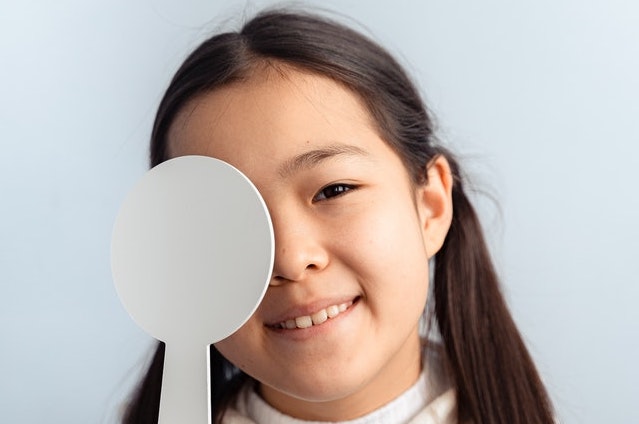One of the common things you’ll find during back-to-school time is preventive care, like well-child visits, sports physicals, and vaccination updates. But what about your child’s eyes? You should catch conditions like progressive myopia in their early stages, before they significantly affect your child’s life.
Why Should My Child Get an Eye Exam?
Some children won’t show any visual impairments until they go through a school vision screening. However, it is important to see an eye doctor to identify early vision problems. Children with a genetic condition called congenital cataracts may have a delayed diagnosis, which can affect their general development and education.
The American Optometric Association estimates that vision screenings miss up to 75% of children with vision problems and give less than 4% of the information provided by a comprehensive eye exam.
This is partly because on a regular vision screening, at most two out of six major risk factors for progressive myopia and blindness are assessed. A comprehensive eye examiner will assess these risk factors as well as the signs related to eye health.
What if They Fail Their Screening at School?
When your child fails a vision screening, you will probably be referred to an eye doctor. Common reasons for children to fail a vision screening include congenital conditions such as Down syndrome, prematurity, juvenile idiopathic arthritis, or neurofibromatosis.
Some eye conditions that children may experience also include amblyopia (lazy eye), strabismus (crossed or misaligned eyes), and refractive errors (nearsightedness, farsightedness, astigmatism).
What is Myopia?
Myopia, also known as nearsightedness, is an eye condition where you can see objects that are close to you but not objects that are far away. For example, your child might be able to see the schoolwork on their desk with no issue yet they may have problems seeing the board if they sit further away. The condition occurs because your child’s eyeball becomes more elongated instead of staying spherical.
What is Progressive Myopia?
Progressive myopia is a type of myopia that gradually gets worse year by year. If left untreated, progressive myopia can become high myopia. High myopia is a case of severe nearsightedness that may also lead to other eye conditions, such as glaucoma, retinal detachment, and macular degeneration.
Good Visual Habits to Maintain
While good visual habits may not completely eliminate progressive myopia, they can potentially mitigate the damage your child’s eyes experience. Here are 5 habits to incorporate into your everyday life.
1. Have your child perform close tasks, such as reading or desk work, in good lighting. They should avoid reading in the dark, especially on devices that emit lots of bright light.
2. They should perform close tasks at a good distance away from your eyes. The general guideline is to do tasks at a distance that matches the length of your forearm.
3. They should avoid looking at screens for long periods of time. Their eyes should take a break every 20 minutes if possible.
4. Have them watch television at an even further distance — at least 10 feet away.
5. Encourage a break from devices. Go outside with them for 60 minutes per day.

